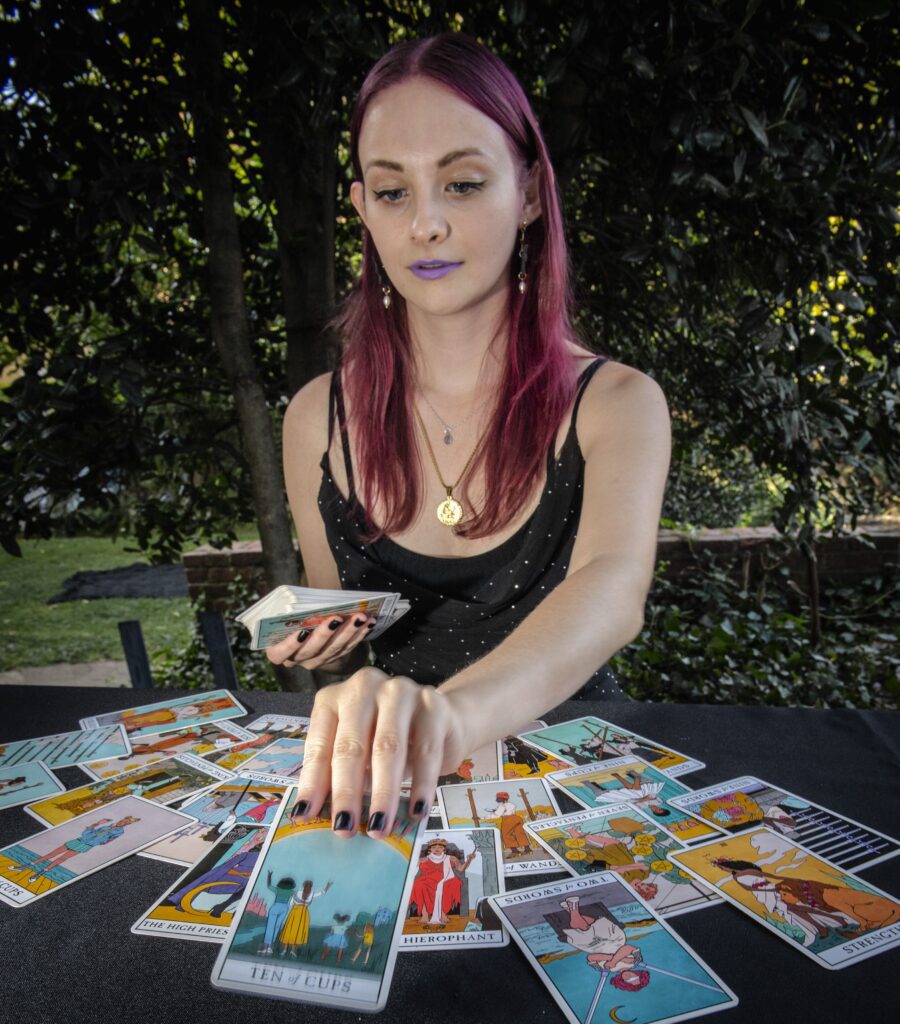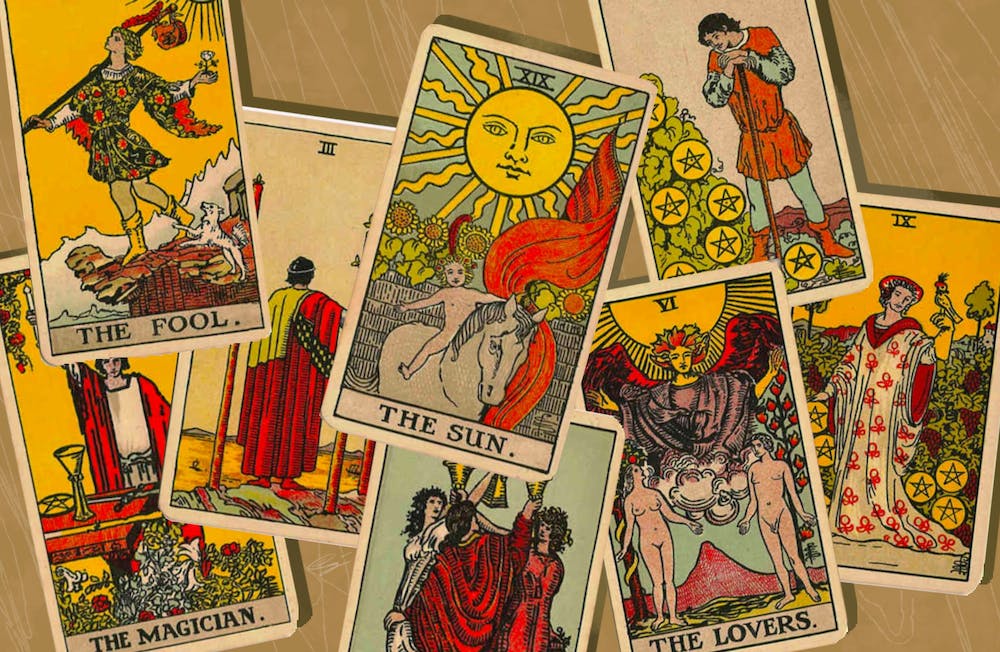Tarot, a deck of 78 cards, has fascinated and intrigued people for centuries. With its origins traced back to the 15th century, this mystical tool has found its way into various cultures around the world. From the tantalizing gypsy fortune-tellers of Europe to the spiritual practitioners of Asia, the enigmatic art of tarot reading has woven its way into the fabric of many diverse cultures, providing insights, guidance, and a touch of magic to those who seek it. Whether you are a skeptic or a believer, join us as we embark on a journey to uncover the cultures that have embraced and incorporated tarot into their traditions and belief systems.
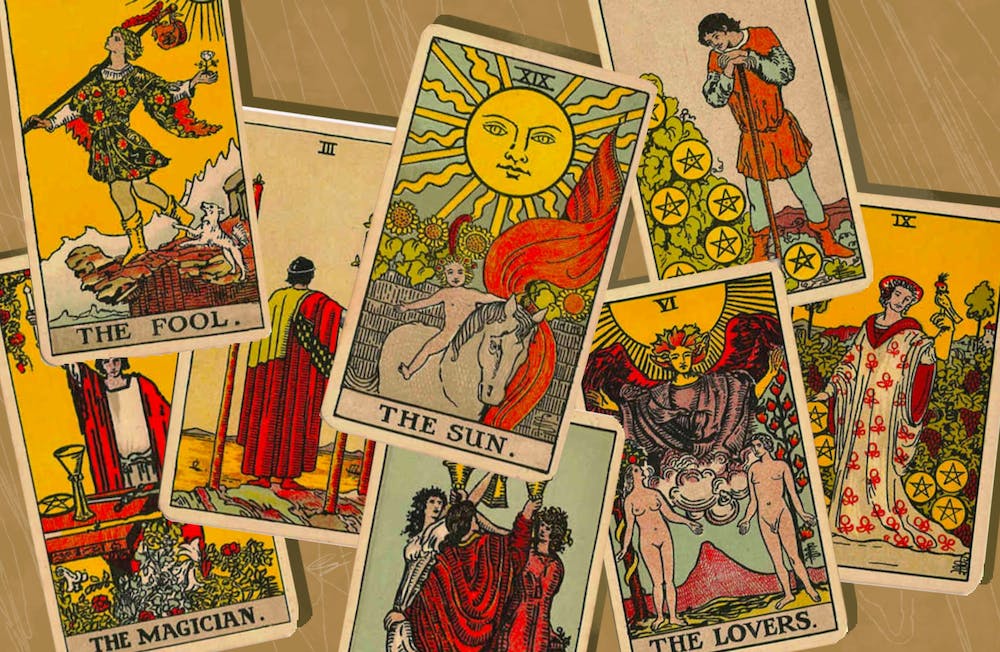
1. Western Culture
1.1 History of Tarot in Western Culture
Tarot cards have a rich history in Western culture, dating back to the 14th century in Europe. Originally, tarot cards were primarily used for playing card games. However, in the late 18th century, tarot cards started to gain popularity as a tool for divination and spiritual guidance. This shift in usage led to the development of various tarot decks specifically designed for divinatory purposes, such as the Rider-Waite Tarot deck and the Crowley-Harris Thoth Tarot deck.
1.2 Tarot Cards in European Countries
Tarot cards have had a significant presence in European countries throughout history. In Italy, for example, tarot cards were widely used for both gaming and divination. The Tarot of Marseilles, a traditional tarot deck with vibrant imagery and symbolism, originated in France and became one of the most popular tarot decks in Europe. Other European countries, such as Spain and Germany, also developed their own unique tarot traditions, each with its own distinctive symbolism and interpretations.
1.3 Influence of Tarot on Western Art and Literature
Tarot has had a profound influence on Western art and literature. Artists and writers have been drawn to the visual and symbolic nature of tarot, using it as a source of inspiration for their creative works. The imagery and archetypal themes found in tarot cards have been incorporated into various artistic and literary movements, including Surrealism and Symbolism. Tarot symbolism can often be seen in paintings, poetry, and novels, adding depth and meaning to the artistic expressions of Western culture.
2. Eastern Culture
2.1 Introduction of Tarot to Eastern Culture
Tarot was introduced to Eastern culture during the 19th and early 20th centuries, as a result of increased cultural exchanges and globalization. Western missionaries, traders, and diplomats brought tarot cards to countries such as Japan, China, and India, where they aroused curiosity and fascination.
2.2 Use of Tarot in Asian Countries
Asian countries have incorporated tarot into their divinatory practices, adapting it to their own cultural contexts. In Japan, for example, tarot cards are often used in combination with traditional divination systems like astrology and numerology. Chinese fortune-telling practices have also seen the incorporation of tarot cards, with certain decks being developed specifically for Chinese cultural interpretations.
2.3 Incorporation of Tarot into Eastern Philosophies
The philosophies and spiritual traditions of Eastern cultures have provided a unique lens through which tarot has been incorporated. In countries like India, tarot has been intertwined with Hindu astrology and divination practices. The concept of karma and the belief in past lives are often reflected in the interpretations of tarot cards. In Buddhist-influenced cultures, such as Tibet and Thailand, tarot has been connected to concepts of mindfulness, compassion, and spiritual enlightenment.
3. African Culture
3.1 Traditional Uses of Divination in African Culture
African culture has a long history of divination practices, with diverse methods employed across the continent. Traditional African divination systems, such as the Ifá divination in West Africa and the Sangoma divination in Southern Africa, have been deeply rooted in the belief that the spirit world communicates with individuals through divinatory tools. Prior to the introduction of tarot, African cultures had their own unique systems of divination that played significant roles in spiritual and community life.
3.2 Tarot’s Impact on Divination Practices
With the arrival of tarot in African contexts, there has been an intermingling of traditional African divination practices and tarot card readings. Tarot has been embraced by some African diviners and integrated into their existing systems, blending traditional wisdom with the symbolism and interpretations of tarot cards. This fusion has brought forth new perspectives and approaches to divination in African culture.
3.3 Adoption and Adaptation of Tarot in African Contexts
In some African countries, tarot has found a place alongside indigenous divinatory practices. Urban centers, in particular, have witnessed the growth of tarot reading circles and the emergence of tarot readers who combine Western esoteric knowledge with elements of African spirituality. The adoption and adaptation of tarot in African contexts has allowed for the preservation and evolution of divination traditions in the face of modern influences.
4. Native American Culture
4.1 Native American Spirituality and Divination
Native American cultures have a strong spiritual connection to the natural world and believe in the interconnectedness of all living beings. Traditional Native American spirituality encompasses diverse practices of divination and seeking spiritual guidance from ancestors, nature, and spirits. These practices vary among different tribes, with each tribe having its own unique divinatory methods and rituals.
4.2 Tarot Readings in Native American Tribes
Tarot readings have gained some recognition and interest within Native American tribes. Some individuals within these communities have begun using tarot as a means of seeking spiritual guidance and insight. Tarot cards may be incorporated into traditional Native American ceremonies or used as a tool for personal reflection and self-discovery. However, it is important to acknowledge and respect the cultural protocols and traditions of each specific tribe when engaging in tarot readings within Native American communities.
4.3 Cultural Relevance and Interpretation of Tarot
Tarot’s cultural relevance within Native American communities lies in its capacity to provide a different perspective and approach to spiritual guidance. By integrating tarot with their indigenous spiritual practices, some Native Americans aim to explore and strengthen their connection to their ancestral traditions while embracing new paths of spiritual exploration. The interpretation of tarot cards within Native American cultures often emphasizes the importance of harmony with nature, the interconnectedness of all beings, and the guidance of ancestral spirits.
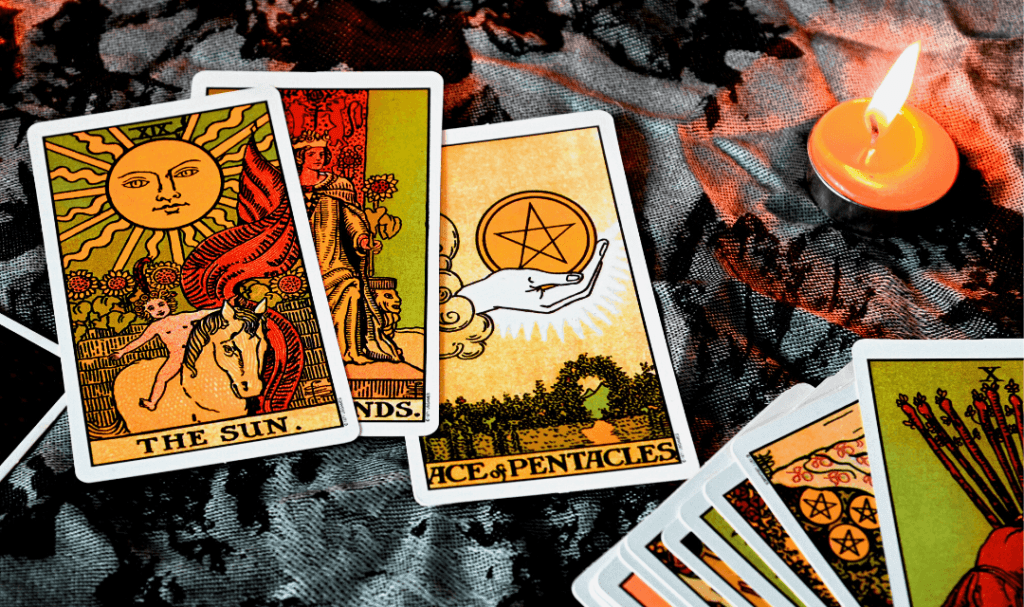
5. Latin American Culture
5.1 Folklore and Superstitions in Latin American Culture
Latin American culture is rich in folklore, superstitions, and beliefs in supernatural forces. Traditional divinatory practices involving the use of various tools have been an integral part of Latin American spirituality for centuries. These practices encompass a wide range of methods, including reading playing cards, coffee grounds, and candles, as well as seeking guidance from curanderos (healers) and brujos (witches).
5.2 Tarot’s Position among Divinatory Practices
Tarot has found its place among the diverse divinatory practices in Latin American culture. Many individuals incorporate tarot card readings into their spiritual repertoire, seeing it as a valuable tool for gaining insight, making decisions, and seeking guidance. The imagery and symbolism of tarot cards resonate with the cultural and spiritual beliefs of Latin American communities, making it a popular choice for those seeking a deeper understanding of their lives and destinies.
5.3 Tarot’s Role in Modern Latin American Spirituality
In modern Latin American spirituality, tarot has gained prominence as a way to explore personal growth and self-reflection. Tarot cards are often used in rituals, ceremonies, and spiritual gatherings, allowing individuals to connect with their inner selves and the spiritual realm. Tarot’s role in modern Latin American spirituality extends beyond divination, becoming a tool for empowerment, healing, and the cultivation of intuition.
6. Middle Eastern Culture
6.1 Historical Context of Divination in the Middle East
The Middle East has a long history of divination practices, deeply intertwined with its religious and cultural heritage. Divination has been practiced within various religious traditions, such as Islam, Judaism, and Zoroastrianism, as a means of seeking guidance and interpreting the will of a higher power. Methods of divination in the Middle East have included the interpretation of dreams, casting of lots, and reading celestial signs.
6.2 Tarot Reading Circles and Popular Interest
In recent years, there has been a growing interest in tarot within the Middle East, particularly among younger generations. Tarot reading circles, workshops, and online communities have emerged, providing a space for individuals to explore and learn about tarot cards and their interpretations. Despite the challenges posed by cultural and religious sensitivities, tarot has gained a foothold, offering a new perspective on divination and personal growth in the Middle Eastern context.
6.3 Cultural Adaptation of Tarot in Middle Eastern Society
The cultural adaptation of tarot in Middle Eastern society involves a delicate balance between respecting traditional religious values and embracing new spiritual and self-exploratory practices. Some tarot readers in the Middle East approach tarot as a tool for personal reflection and self-improvement, while reframing its symbolism and interpretations to align with Islamic or cultural values. The integration of tarot into Middle Eastern society reflects a shifting cultural landscape and a desire for self-discovery within the region.
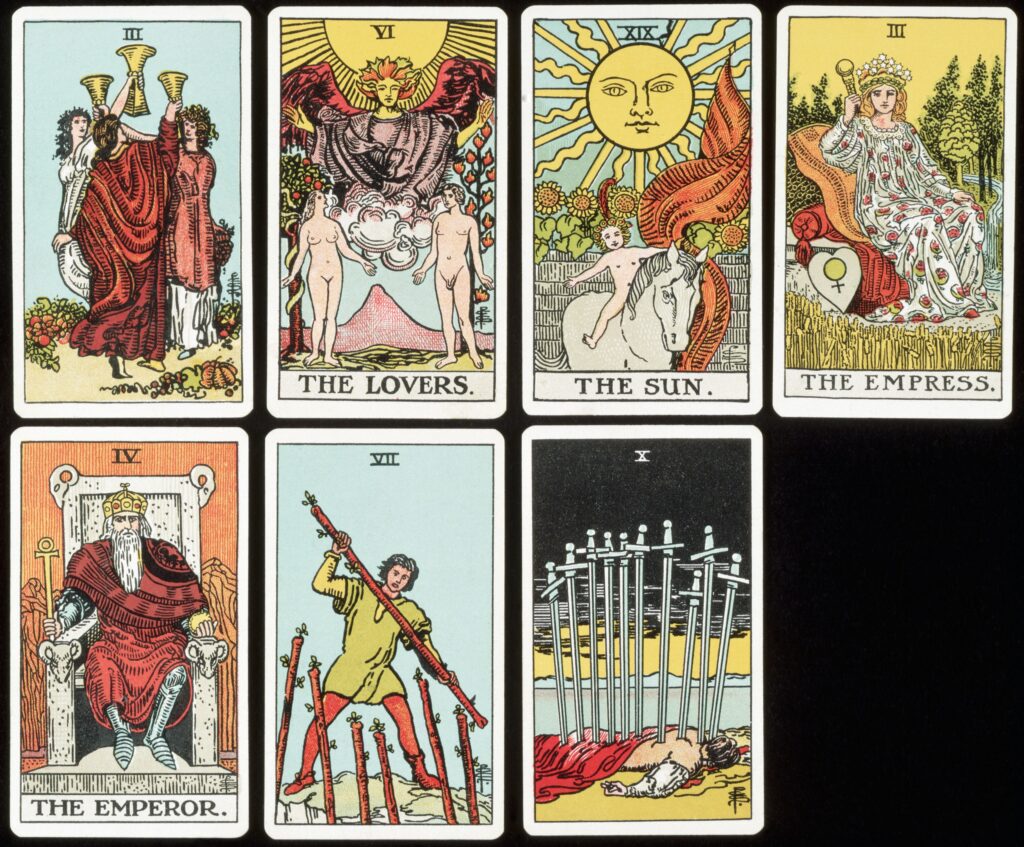
7. South Asian Culture
7.1 Tarot in Hindu Astrology and Divination
In South Asian culture, tarot has found its place alongside Hindu astrology and divination practices. Tarot cards are seen as a complementary tool to gain insights into one’s past, present, and future. The rich symbolism and archetypal imagery of tarot cards resonate with the Hindu belief in karma and the interconnectedness of life. Tarot readings are often sought for guidance on personal matters, relationships, and life path decisions.
7.2 Incorporation of Tarot in Indian Spiritual Practices
India has witnessed the incorporation of tarot into various spiritual practices, such as yoga, meditation, and Ayurveda. Tarot’s role in Indian spirituality often centers around self-reflection, personal growth, and spiritual healing. Tarot decks with Indian-inspired imagery and symbolism, sometimes referred to as “Indigenous Tarot,” have been created to align with the cultural and spiritual traditions of India.
7.3 Tarot’s Role in Esoteric and New Age Movements
Esoteric and New Age movements in South Asia have embraced tarot as a tool for spiritual exploration and self-realization. Tarot cards are often used to delve into the mysteries of the universe, uncover hidden truths, and tap into one’s intuition. Tarot readers and enthusiasts in South Asia view tarot as a means of connecting to higher consciousness and expanding their spiritual journey.
8. Indigenous Cultures
8.1 Shamanic Traditions and Oracle Systems
Indigenous cultures around the world have rich traditions of shamanic practices and oracle systems. These traditions vary greatly among different indigenous communities, but they often involve seeking guidance and healing through communing with spirits, ancestors, and the natural world. Divination methods such as casting lots, reading animal signs, and interpreting dreams have been integral to the spiritual practices of indigenous cultures.
8.2 Indigenous Culture’s Relationship with Tarot
The relationship between indigenous cultures and tarot is complex and multifaceted. Some indigenous individuals and communities have embraced tarot as a tool for personal and collective healing, blending its symbolism and interpretations with their own traditional wisdom. However, it is important to approach tarot in indigenous contexts with respect and cultural sensitivity, recognizing that the adoption of tarot may not be embraced by all indigenous groups.
8.3 Tarot as a Tool for Spiritual Guidance in Indigenous Communities
Within indigenous communities that have incorporated tarot, it is often used as a means of spiritual guidance and self-discovery. Tarot cards can serve as a bridge between the physical and spiritual realms, offering insight and wisdom from ancestral knowledge and universal energies. Tarot readings within indigenous contexts may focus on fostering harmony with nature, reconnecting with ancestral roots, and empowering individuals to navigate their spiritual paths.
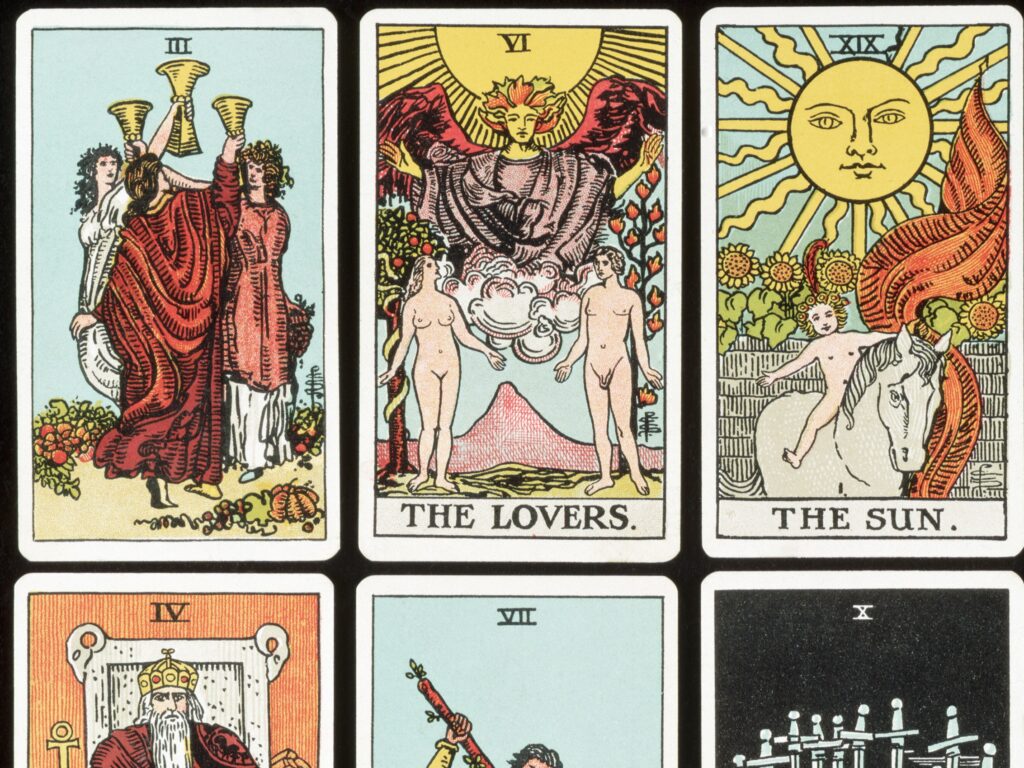
9. East Asian Culture
9.1 Taoist and Buddhist Influences on Tarot
Taoist and Buddhist philosophies have influenced the interpretation and usage of tarot in East Asian cultures. Taoist principles of balance, harmony, and the natural flow of life are often reflected in interpretations of tarot cards. Buddhist concepts, such as impermanence and the interconnectedness of all beings, have also found resonance in the symbolism and interpretations of tarot. Tarot decks with East Asian-inspired imagery have been developed to capture these influences.
9.2 Tarot’s Connection to Chinese Fortune-Telling
In China, tarot cards have been connected with traditional fortune-telling practices, such as the use of the I Ching (Book of Changes) and other divinatory methods. Tarot decks specifically designed with Chinese cultural references, such as the Chinese Tarot, have been developed to cater to the unique interpretations and symbolism within Chinese fortune-telling traditions. Chinese individuals may incorporate tarot readings into their overall divinatory practices to gain additional insights into their futures.
9.3 Popularization of Tarot in Contemporary East Asia
Tarot has gained popularity in contemporary East Asia, particularly among urban populations. Tarot reading services, workshops, and tarot communities have emerged, providing opportunities for individuals to deepen their understanding of tarot and explore its relevance in their lives. Tarot’s growing popularity in East Asia reflects a modern desire for self-reflection, personal growth, and accessing spiritual guidance within the region.
10. Modern Global Culture
10.1 Tarot’s Popularity in the Modern World
Tarot has experienced a surge in popularity in the modern world, transcending cultural boundaries and becoming a global phenomenon. Its appeal lies in its ability to provide insights, guidance, and self-reflection for individuals from diverse cultural, religious, and spiritual backgrounds. Tarot has found its place in mainstream culture through various mediums, including social media, books, films, and television shows, further enhancing its accessibility and global reach.
10.2 Tarot’s Role in Self-Reflection and Personal Growth
In modern global culture, tarot has been embraced as a powerful tool for self-reflection and personal growth. Tarot readings offer individuals an opportunity to explore their inner selves, gain clarity about their life situations, and make informed decisions. The archetypal themes and symbols within tarot cards resonate with universal human experiences, allowing individuals to tap into their subconscious minds and access deeper levels of understanding.
10.3 Cross-Cultural Exchange and Tarot
The widespread adoption and adaptation of tarot across cultures have fostered cross-cultural exchanges and mutual learning. As tarot interacts with different cultural, religious, and spiritual traditions, it continues to evolve and expand its interpretations. Cross-cultural exchanges have fueled the development of new tarot decks, incorporating diverse cultural symbolism and perspectives. Tarot’s ability to transcend cultural boundaries and promote intercultural understanding makes it a unique and valuable tool in the modern global culture.
In conclusion, tarot cards have made their way into various cultures around the world, each embracing and adapting them in their own unique ways. From the Western world to Asia, Africa, the Americas, and beyond, tarot has become a tool for divination, spiritual guidance, and personal growth. Its widespread popularity reflects its universal appeal and its ability to resonate with individuals from different cultural backgrounds. Tarot serves as a bridge between cultural traditions, encouraging cross-cultural exchanges and contributing to the shared human experience of seeking understanding and spiritual connection.
